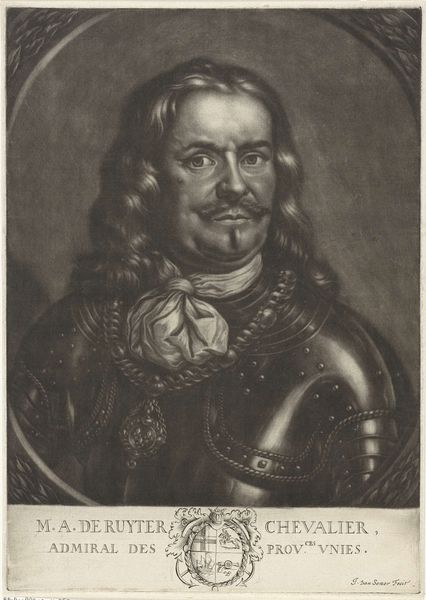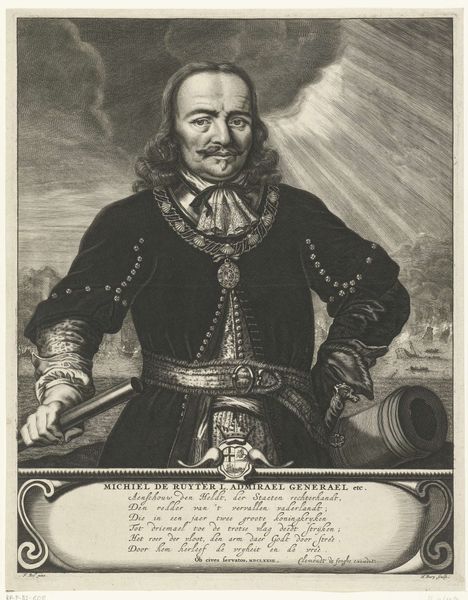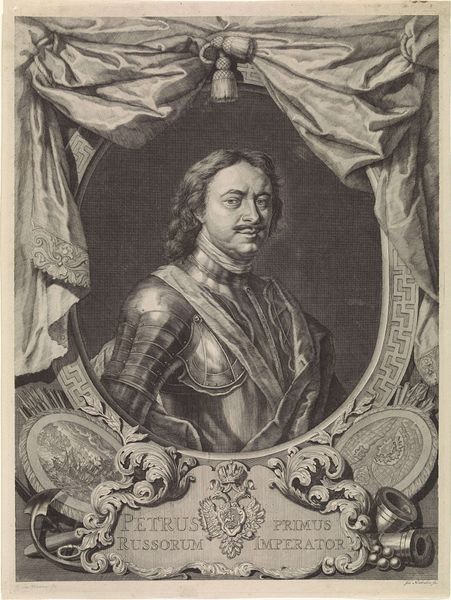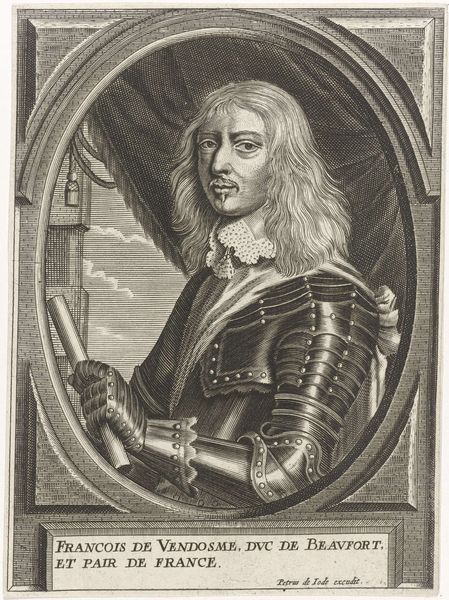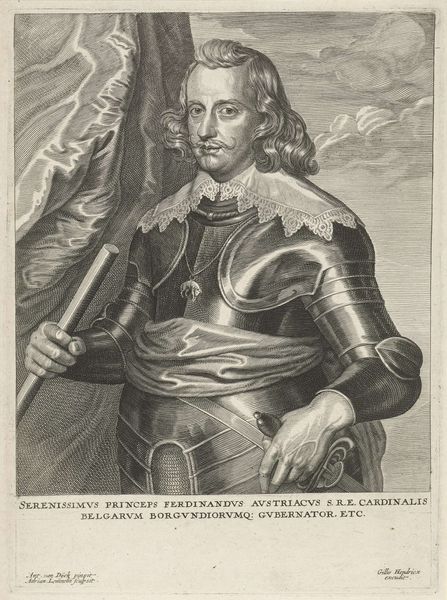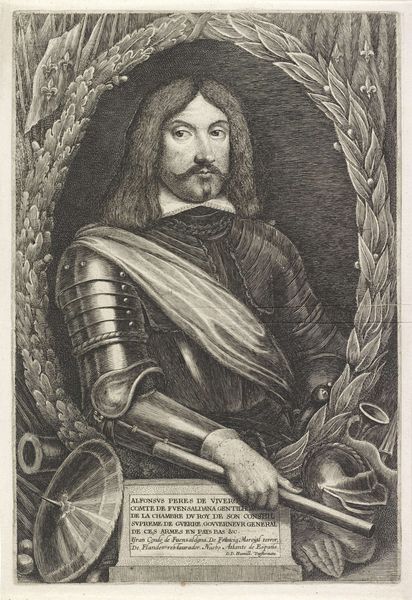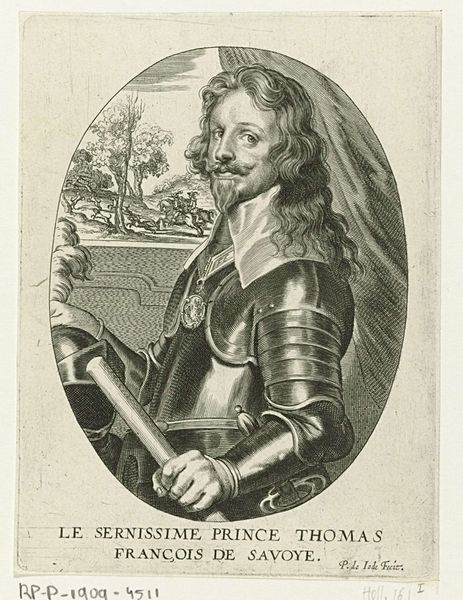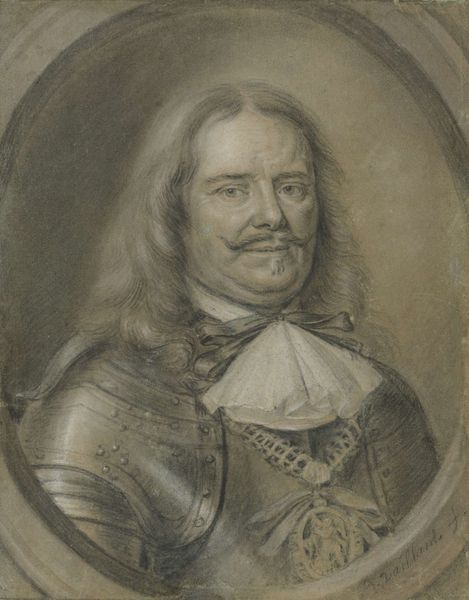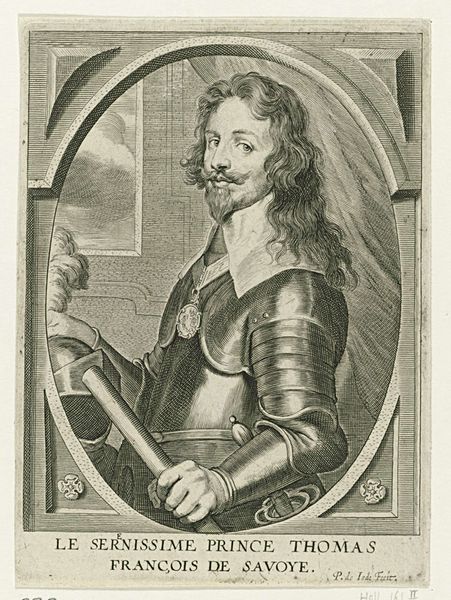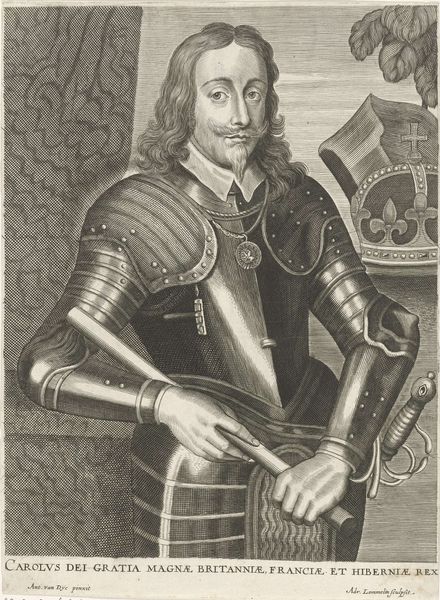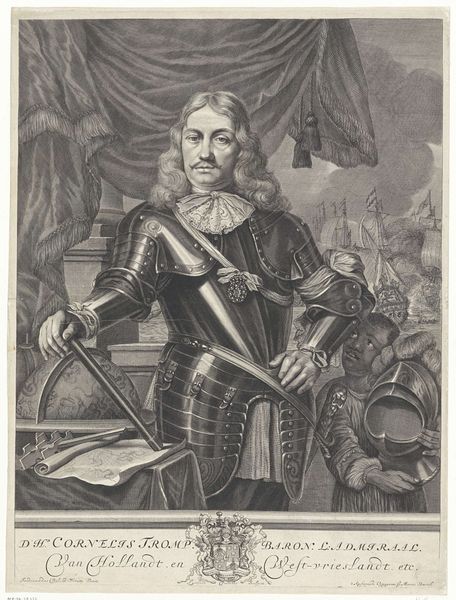
engraving
#
portrait
#
facial expression drawing
#
baroque
#
caricature
#
portrait reference
#
portrait drawing
#
history-painting
#
facial portrait
#
engraving
#
portrait art
Dimensions: height 335 mm, width 249 mm
Copyright: Rijks Museum: Open Domain
Curator: This engraving by Jan van Somer, dating from 1655 to 1700, presents a commanding portrait of Admiral Michiel de Ruyter. Editor: My immediate impression is of stern authority. The detailed armour and the rich blacks of the engraving exude power. You can sense the weight of responsibility in his posture. Curator: Indeed. De Ruyter was a significant figure in Dutch naval history, and portraits like these played a vital role in shaping and maintaining his public image. The setting with the globe and his coat of arms signifies dominance on global and national levels. How do you see it reflecting broader power dynamics of the era? Editor: Absolutely. It reflects a very masculine ideal – a kind of national heroism intertwined with colonial ambition. There is a tension in portraits of this type because there is the desire to honour the sitter, while simultaneously being bound by the rigid class and social conventions that shaped them. Note how De Ruyter appears against a backdrop that positions him as a key actor in the age of exploration and overseas expansion. Curator: Precisely. This portrait not only commemorates his individual achievements but also situates him within the context of Dutch maritime power. One can ask whether the glorification of a military figure in itself challenges pacifist interpretations of art history. Editor: And how it echoes into modern political and military discourse. Images such as this serve not just as a historical record, but also as a way of perpetuating national pride and perhaps obscuring some of the harsher realities of that history. Curator: Agreed. The visual rhetoric of strength and resolve clearly intends to cement De Ruyter’s place in the Dutch pantheon. Editor: And so it remains – a study in the power of portraiture and its ability to construct and reinforce historical narratives, but also to reflect social issues that are important for interpreting how people experienced that time period. Curator: This artwork definitely presents us a glimpse into the politics of imagery. Thank you for providing new ways to understand how social and political contexts influence portraiture.
Comments
No comments
Be the first to comment and join the conversation on the ultimate creative platform.

